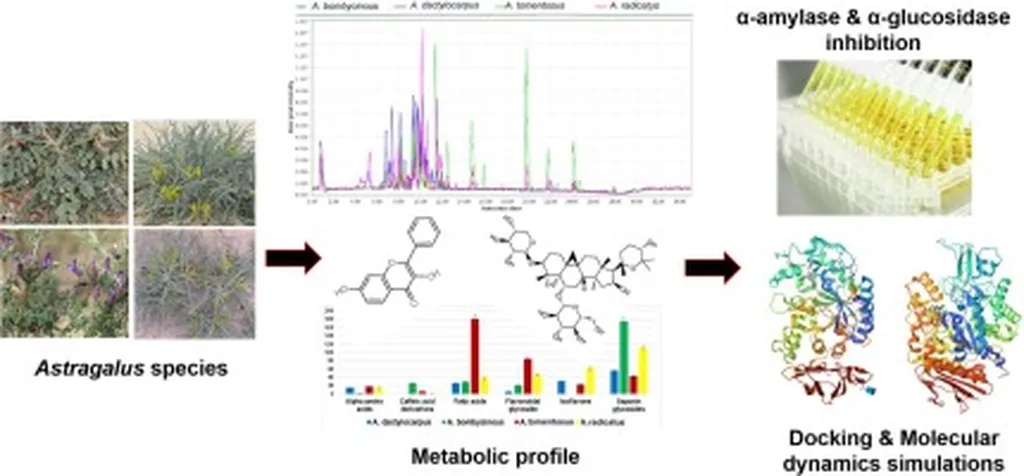In the heart of Türkiye, a genus of plants is thriving in a display of biodiversity that has captivated scientists for years. Astragalus, a genus with 493 taxa and 63 sections, is the largest in the country, with many species being narrow endemics, meaning they are unique to specific regions and often found in marginal habitats. The economic significance of Astragalus is substantial, with various species used in traditional medicine, agriculture, and even as ornamental plants. However, the taxonomic categorization based on morphological characteristics has proven insufficient for distinguishing certain groups within this genus. This is where the work of Mevlüde Alev Ateş, a researcher from the Department of Agricultural Biotechnology at Kırşehir Ahi Evran University, comes into play.
Ateş and her team have delved into the molecular level to understand the speciation of Astragalus in Türkiye. Their study, published in the journal ‘Plants’ (translated from Turkish), focused on 152 samples representing 30 species across six sections of the genus. The researchers collected fresh leaves over several months of comprehensive field studies and analyzed the internal transcribed spacer (ITS) of nuclear ribosomal DNA (nrDNA) and the trnL5′-L3′ + L3′-F(GAA) + matK of chloroplast DNA (cpDNA) regions.
The findings are intriguing. The Poterion section was identified as the newest and most divergent, while the Megalocystis and Halicacabus sections were found to be the closest and older ones. Notably, Astragalus vaginans from the Hymenocoleus section was found to be part of several lineages, indicating a complex evolutionary history. Additionally, Astragalus dipodurus and Astragalus oleaefolius from the Macrophyllium section were often grouped together in distinct sub-branches, separate from other species in the same section.
The study also shed light on the biogeographical history of these species. Many are divided by the Anatolian diagonal, a significant geographical feature that has influenced speciation. The researchers found that the speciation of a significant number of species began during the Pleistocene geological time period, suggesting that geographical isolations or other weak isolation mechanisms played a crucial role in the diversification of Astragalus.
The implications of this research are far-reaching. Understanding the molecular-level speciation of Astragalus can have significant commercial impacts, particularly in the energy sector. Many species of Astragalus are known for their ability to thrive in marginal habitats, making them potential candidates for phytoremediation and bioenergy production. “By understanding the genetic diversity and evolutionary history of Astragalus, we can better utilize these plants for various applications, including bioenergy and environmental conservation,” Ateş explained.
The study also highlights the need for further research into the speciation mechanisms of Astragalus. As Ateş noted, “Our findings open up new avenues for research into the evolutionary history and ecological adaptations of Astragalus species. This knowledge can be instrumental in developing strategies for the conservation and sustainable use of these valuable plant resources.”
In conclusion, the work of Mevlüde Alev Ateş and her team provides a molecular-level insight into the diversification and biogeographic history of Astragalus in Türkiye. This research not only enhances our understanding of the genus but also paves the way for future developments in the field of agritech and bioenergy. As we continue to explore the genetic diversity of plants, we unlock new possibilities for sustainable and innovative solutions to global challenges.

